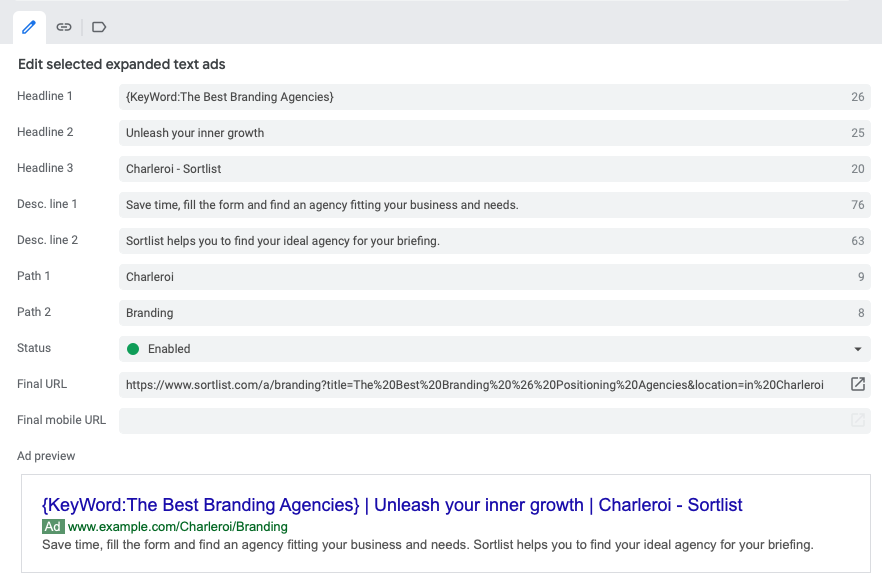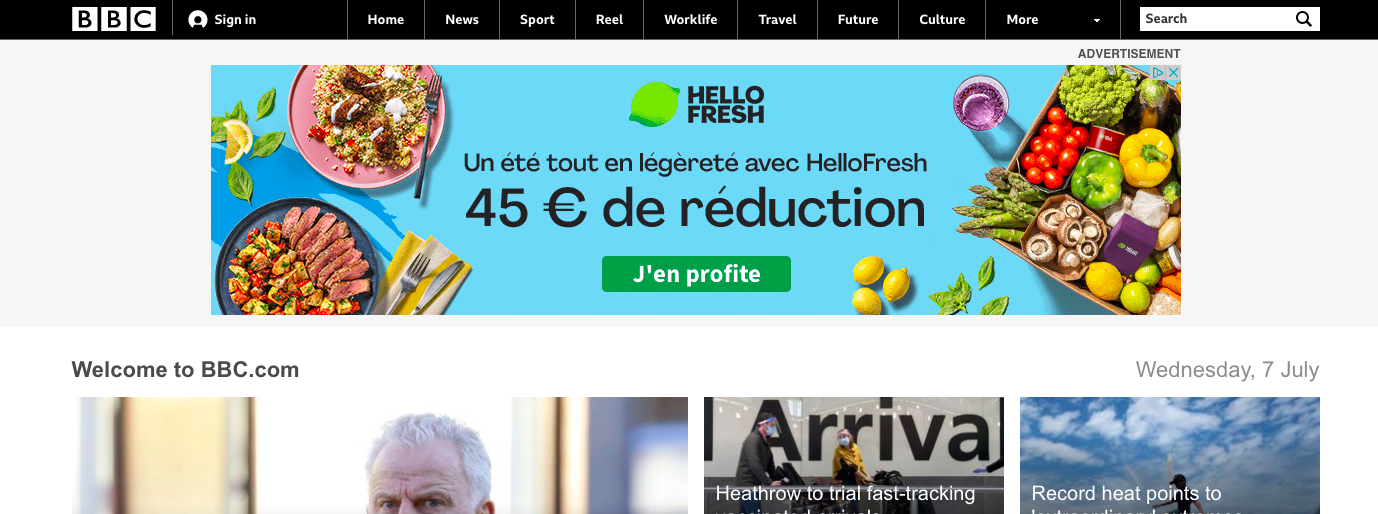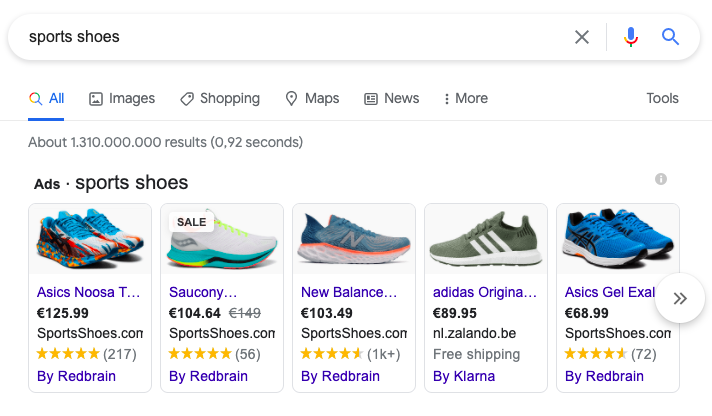
SEM Strategy: Successful Digital Marketplace with SEO/SEA
Last update: 22 March 2024 at 11:38 am
The consumer behavior of many customers has changed dramatically in recent years. Today, users can find everything they need for their private and professional lives on digital platforms, e-commerce, and company websites; thus, using an SEM strategy is critical.
To compete against many competitors, a powerful search engine marketing strategy (SEM) is becoming increasingly important for most companies. A well-structured website with an attractive design and informative content is the key to building a stable customer base.
Although it may have been easy 20 years ago to land among the top positions on search engine results pages, things are no longer such a breeze today.
This is where a solid SEM strategy comes into play, which has grown in parallel with the development of the internet. Today, search engine marketing with SEO and paid advertising (SEA) offers a variety of strategies and possibilities to companies and products to compete amongst the biggest and extend their customer base.
Key Takeaways
Understanding SEM:
- SEM stands for Search Engine Marketing and encompasses both SEO (Search Engine Optimization) and SEA (Search Engine Advertising).
- Businesses in digital marketplaces must leverage SEM to gain visibility and attract customers through search engines.
SEO Strategies for Marketplaces:
- Keyword research: Identify relevant keywords that potential customers use to search for products or services like yours.
- Website optimization: Optimize your website content, title tags, meta descriptions, and images for targeted keywords.
- Building backlinks: Acquire high-quality backlinks from other websites in your niche to improve your website’s authority and ranking.
- Technical SEO: Ensure your website is mobile-friendly, has fast loading speeds, and follows technical SEO best practices.
- Content marketing: Create valuable and informative content that attracts organic traffic and positions you as an expert.
SEA Strategies for Marketplaces:
- Pay-per-click (PPC) advertising: Run targeted ads on search engines and marketplaces to reach potential customers actively searching for relevant products or services.
- Shopping ads: Utilize product listing ads with high-quality images and descriptions to promote your offerings in search results.
- Retargeting campaigns: Target users who have previously interacted with your website or products with personalized ads to encourage conversions.
- Budget allocation: Allocate your SEA budget strategically based on campaign performance and return on investment (ROI).
Additional Tips:
- Market research: Regularly research your target audience and competitor landscape to stay ahead.
- Analytics and tracking: Monitor your SEM campaign performance through analytics tools and adjust your strategies based on data insights.
- Continuous optimization: Regularly optimize your SEO and SEA campaigns to improve their effectiveness and ROI.
What is Search Engine Marketing (SEM)?
SEM refers to the entire field of search engine marketing and is divided into two strategies: SEO and SEA.
In this kind of marketing, the terms SEO and SEA come up a lot when trying to give a company the boost it needs. Search Engine Optimization (SEO) and Search Engine Advertising (SEA) are the two areas in an SEM strategy.
The right combination of both these strategies can help your company gain more visibility and attract traffic. This is essential if you wish to dominate the digital market. SEA and SEO have their distinct ways of doing so.
How Does SEO Work?
An effective SEO strategy aims to increase the visibility of businesses for an organic search result with website improvements.
In the long term, this form of online marketing is more likely to show positive results. With the right keywords (and negative keywords), backlinks, and rich content, your website will have a better chance of achieving better rankings in search engines such as Google or Bing.
The optimization is carried out on the content side of things and the technical end.
Within technical SEO, a small but essential sub-area of SEO has established itself. Here, improvements are made to the website that are invisible to the user.
All technical SEO measures are intended to make the work of the search engines’ crawlers and algorithms easier. Responsive web design for mobile format sizes is just as important as reducing the source code and structuring the website.
With this, search algorithms can scan, register, and categorize the content of your website more quickly.
The effects of this form of search marketing can be measured via SEO’s key figure with SEO tools. With this data, you can determine how well users accept your website.
- Duration of time on the website
- Bounce rate
- Visibility indices for relevant keywords
- Snipped click rates
- Ranking position of individual keywords
- Distribution of ranking position on the search engine results page (SERP)
What Does SEA Have to Offer?
With the help of SEA, you direct your target audience to your website. You buy advertisements and banners from search engine providers such as Google, Bing, or Yahoo by putting money into bidding strategies.
Unlike SEO, which aims to land your page in the top positions of organic search results, SEA helps you reach your potential customers much faster and more directly with a paid strategy.
Google is the market leader of search engines, accounting for 70% of all search queries on desktop devices worldwide and 93% of mobile and tablet searches. As these numbers show, the Google Ads platform is the decisive function for your SEA campaign to reach your target market.
How Do You Use Google Ads for SEA?
Google Ads offers users different options to advertise products via paid search ads. For example, you can place a:
- classic text ads
- shopping ads
- display ads
If you are a small company that does not need large advertising campaigns or has a limited budget, ‘Smart’ campaigns are a good solution for using SEA. Google generates the necessary data itself. All you have to do is enter the desired advertising budget.
Although Google does a great job at keeping things simple, businesses such as SEO agencies help all kinds of companies build their search engine marketing campaigns.
Text Ads
This kind of advertising allows you to develop your own keyword strategy and choose which ones you want to use in your pay-per-click (PPC) campaign. Your ad will be displayed in the SERPs if a customer searches for results with said keywords.
You can create an entire campaign based on different ad groups and ads. Relevant keywords are stored for each ad so that your ad is displayed when the relevant keywords are entered.

Remember that appearing at the top of a SERP is helpful, but don’t forget to write a compelling ad copy to drive traffic onto the landing page.
Display ads
Advertisements in images or text form are placed on different platforms that are a part of the Google advertising network. Your PPC ads are published on partnering websites, online games, search results pages or apps. Here is an example of a display ad for Hello Fresh on the BBC website.

The Google websites (Gmail, YouTube, and Blogger) also belong to this network. You can sign up for this program via Google AdSense, for example. Employees review the incoming applications and find you the best platforms and advertising websites that fit your product.
Shopping ads
With Shopping Ads, you can create product ads generated from your product file. With this form of advertising, the structured data in the data feed is responsible for targeting.

Video ads
These advertisements appear on YouTube as text ads or short video spots.

Cost models for SEA application in an SEM strategy
Google Ads offers various remuneration models. Your selection is based on what you wish to achieve with the ad. For example, do you want to increase website traffic to become more visible to search engines, or are you looking more for sales and membership growth? The most popular models are CPC (Cost per Click) and CPA (Cost per Acquisition).
The costs, whether a click or a follow-up action, are determined beforehand in an ad auction process. The advertiser specifies their maximum bid for an ad or a keyword. Google then evaluates the ad’s bid amount and quality and sets the price accordingly.
In addition, this is where Google decides on the ad rank on its SERP. The final cost may be lower than your highest bid, depending on how the competition bids. However, Google guarantees that the cost will never exceed the maximum bid you specified on Google Ads (previously Google AdWords). You can also specify here what monthly budget Google can work with.
Billing model CPC
With CPC, costs are incurred for each click on your banner or text ads. When visitors search for the corresponding keywords, Google presents the ad on the results pages. If a user clicks on your ad, this click is associated with costs.
This model is primarily to generate more traffic to your website. However, it is not guaranteed that the visit to the website will be followed by a purchase.
Payment model CPA
If you choose this ad payment model, costs are only incurred if the customer performs a specific action. Depending on the company and industry, you can define exactly which follow-up action the customer must take after a click on your ad. CPA is most commonly used in these manners:
- Software companies and platforms pay when the customer downloads a program
- The visitor signs up for a newsletter subscription
- The customer submits a contact or order form.
- A purchase is concluded
- The customer takes part in a raffle
Many companies prefer this billing form because you can measure success by direct action. However, the costs associated with this model are usually much higher than the CPC model.
Before deciding which system to use, consider whether the costs are worth the benefits. For example, 30 euros for an ad campaign may seem like a lot. However, if this is linked to an annual subscription of an insurance policy worth 1,500 euros, the 30 euros have been well spent. But if you are an online shop for T-shirts or souvenirs, such an investment does not pay off.
SEA and Possible Effects on SEO
In general, both SEO and SEA are two separate sub-topics of an SEM strategy. However, the use of SEA can have a positive effect on search engine optimization.
With targeted campaigns in SEA, you increase the traffic on your website. You gain more visibility on the web, and there is a chance that your company or online shop will be entered directly into the browser’s address bar more often.
Google notices these direct type-ins and gives your website a higher trust in the long run, associated with a better ranking. The increased number of clicks and the rising traffic to your website flow into evaluating your internet presence—the page quality increases and, thus, the ranking.
Conclusion
For many companies and agencies, reach on the internet is becoming increasingly important to succeed in the industry. With the right SEM strategy and tools, you can better target your preferred audience and gain new customers.
In doing so, finding an optimal combination of SEO and SEA strategies is crucial. A very good internet presence with valuable content and good structuring and programming is a prerequisite for SEA strategies to be well received by customers. Whether you rely on banner ads, text ads, or video spots in search engine advertising, you must keep the advertising promise with a top website.
Use the functions of Google Ads to create effective campaigns yourself, or get experts on board who can offer you a complete marketing package. Set your monthly budget, decide on a cost model, and get more movement on your website and your business.





